Wildflowers, Grasses and Other Nonwoody Plants
Media
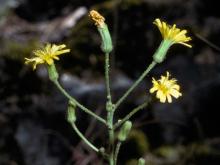
Species Types
Scientific Name
Hieracium gronovii
Description
A native wildflower of forests, blufftops, glades, pastures, and roadsides, beaked hawkweed looks something like a hairy, yellow-flowering chicory. It is found mostly south of the Missouri River.
Media
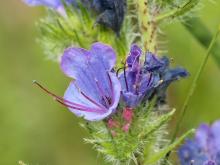
Species Types
Scientific Name
Echium vulgare
Description
A biennial plant with bristly hairs and usually with single stems, viper’s bugloss can grow 2½ feet tall. The flowers are pink in bud, blue to ultramarine later. The protruding stamens are pink.
Media
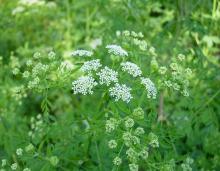
Species Types
Scientific Name
Cicuta maculata
Description
Full grown, water hemlock looks something like a gigantic Queen Anne's lace, but this common, widespread member of the carrot family is the most toxic plant in North America. All parts are deadly. A piece of root the size of a walnut can kill a cow-sized animal.
Media

Species Types
Scientific Name
All true grasses (species in the grass family)
Description
Missouri has 276 species in the grass family, including well-known crop plants and our native prairie grasses. Distinguishing between the species can be difficult, but it’s easy to learn some basics about the group.
Media
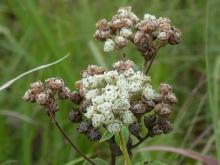
Species Types
Scientific Name
Parthenium integrifolium
Description
A common component of high-quality upland prairie, American feverfew, or wild quinine, is a native wildflower that was used to treat fevers or malaria. It's in the composite family.
Media
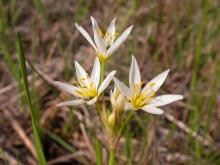
Species Types
Scientific Name
Nothoscordum bivalve
Description
False garlic looks like a wild garlic or onion plant, but it doesn’t smell like one. The flowers can be white, yellowish, or greenish, and they appear in spring and sometimes also fall.
Media

Species Types
Scientific Name
Geum canadense
Description
White avens, a common wildflower in the rose family, may not catch your eye during hikes, but you will probably notice the seeds clinging to your socks when you get home!
Media

Species Types
Scientific Name
Asclepias verticillata
Description
Whorled milkweed has rounded clusters of small white flowers. The leaves are soft, threadlike, and grow in whorls from the stem. It occurs in upland prairies and fields.
Media

Species Types
Scientific Name
Euphorbia corollata
Description
With widespread sprays of small white flowers, flowering spurge looks a lot like the "baby's breath" so popular with florists. Each little "flower" has 5 white false petals surrounding a cup of tiny yellow male flowers and a single female flower.
Media
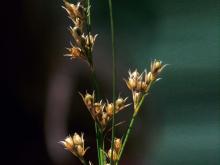
Species Types
Scientific Name
Juncus spp. and Luzula spp.
Description
Missouri has 24 species in the rush family. Distinguishing between these grasslike plants can be tricky, but it’s easy to learn some basics about the group.
See Also
About Wildflowers, Grasses and Other Nonwoody Plants in Missouri
A very simple way of thinking about the green world is to divide the vascular plants into two groups: woody and nonwoody (or herbaceous). But this is an artificial division; many plant families include some species that are woody and some that are not. The diversity of nonwoody vascular plants is staggering! Think of all the ferns, grasses, sedges, lilies, peas, sunflowers, nightshades, milkweeds, mustards, mints, and mallows — weeds and wildflowers — and many more!





















